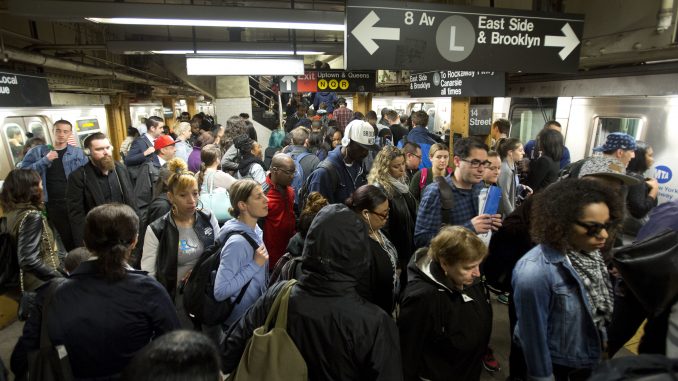
For the past decade, transit riders in the New York-New Jersey area have become increasingly frustrated on their daily rides to and from work. Under severe cuts, transit services have declined while prices have increased across the board.
For decades, the New York City subway system (MTA) and the New Jersey PATH interstate train used to work well enough to get people to work and back. But now just getting to work is a job. While these systems were never as good as they could have been, their precipitous decline in the past decade is still stunning for those who have lived through it. For example, today, there are over 67,000 delays per month, more mechanical breakdowns, more crowded trains, and higher fares. And the causes are all clear.
In the New York City subways, most equipment is from the 1930’s. Nearly six million people use the system daily, up from only four million in the early 1990s. Recent Mayors Giuliani and Bloomberg and Governor Cuomo have diverted funding away from transportation, or they just spend it on superficial improvements, not actual repairs, upgrades, and infrastructure. In 1994, Giuliani cut New York City’s contribution to the system by $400 million, even while encouraging tourism as well as luxury residential and corporate development that increased the burdens on the system. In total, Giuliani and Bloomberg reduced the maintenance budget by more than twenty percent. Cuomo’s administration forced the MTA to spend five million dollars to bail out three state-run ski resorts that were struggling after a warm winter. Thanks to these shameful decisions, in 2017, 18% of the MTA operating budget was spent on paying interest on debt. Just imagine how that money could be spent on working people instead of going to the banks.
Similarly, in 2009 funding for NJ Transit stood at $348 million annually. After seven years of Governor Chris Christie, it was only $33 million. Accidents and delays have increased while fares have gone up dramatically – a 22% increase in 2010, and a 9% increase in 2015. These problems came to a head last year when the system was forced to do emergency repairs to New York Penn Station and a commuter train slammed into Hoboken Station killing one and injuring dozens.
The same trend has happened with New Jersey PATH trains – in 2010 it cost $2.00 to go from New Jersey to New York, in 2012 it cost $2.25, and in 2015 that increased to $2.75, raising the cost of a round trip to $5.50. Simultaneously, as more apartments are built along the PATH lines in Jersey City, Harrison, and Newark – for those who can no longer afford the insane prices in New York and Hoboken – the trains have become increasingly more crowded. Even on weekends, commuters deal with packed trains, long waits, and inconsistent service. Meanwhile, PATH (which owns the World Trade Center site) spent about $3.9 billion to construct 1 World Trade Center, the tallest building in the U.S.
These frustrations demonstrate the priorities of the billionaire class and their banks as they redevelop cities to their liking, making life harder for workers. This isn’t how things are supposed to be. When will hard working people get what we need?

